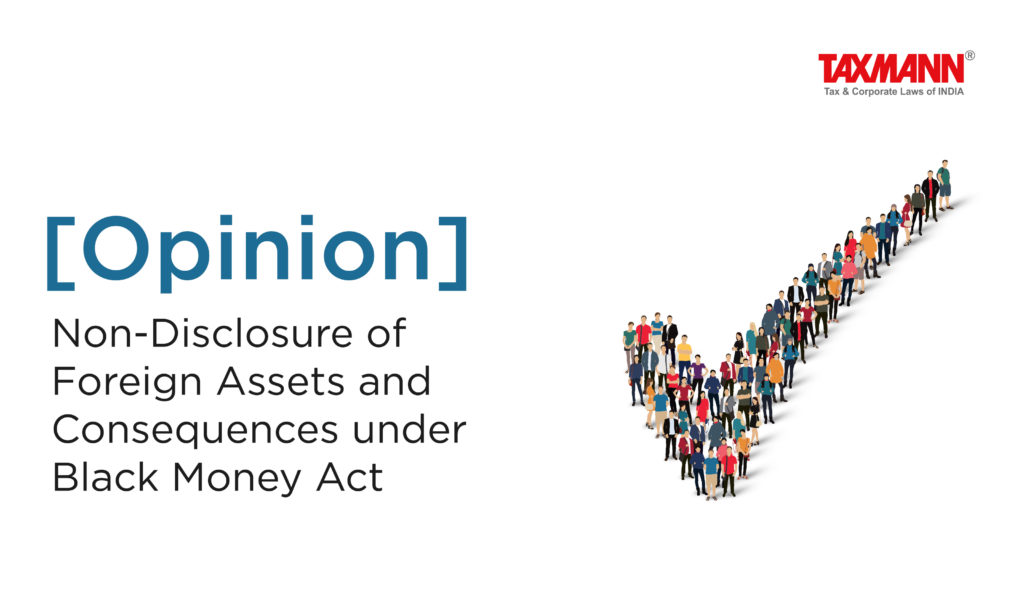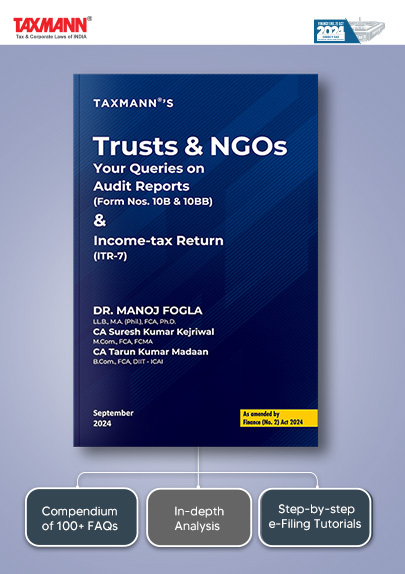[Opinion] Non-Disclosure of Foreign Assets and Consequences under Black Money Act
- Blog|News|Income Tax|
- 3 Min Read
- By Taxmann
- |
- Last Updated on 27 July, 2023
CA Sri Harsha & CA Narendra – [2023] 152 taxmann.com 557 (Article)
1. Background
1.1. In order to counter the tax avoidance by residents in India by way of non-disclosing the income earned outside India, Central Government has introduced Black Money Act with effective from 01.07.2015. Though the IT Act levies tax on global income earned by residents, as there are inherent limitations for applicability of IT Act. The objective of the Black Money Act is to levy tax on undisclosed foreign income/or assets located outside India.
1.2. Every resident and ordinarily resident, while filing the return of income, shall disclose all foreign assets (including investment in shares and securities) and income on such foreign assets in Schedule FA. Non-submission of such Schedule FA in the return attracts consequences under the Black Money Act. In this Article, concept of ESOPs has been considered for better explaining the consequences under the IT Act and Black Money Act. The same principles would equally apply to other nature of assets as well.
1.3. It is general practice that a multinational company allots stock to its employees or employees of its Indian subsidiary under the global/normal ESOP scheme. In recent times, non-reporting of such employee stock options in the income tax returns has created a buzz in the industry. In some newsmedia,it was highlighted that the Government of India was in possession of information that many of the residents have not disclosed such ESOPs in their returns and hinted that the non-reporting of such ESOPs in India is liable for a huge penalty.
1.4. Companies may provide stock to employees either by way of ESOPs or RSU. The difference between the ESOPs and RSU is that in the former case, a company issues ESOPs to its employees at pre-determined exercise price. Once the conditions of granting ESOPs have been satisfied by the employee, after the expiry of vesting period, he can exercise the option to purchase the shares of the company at the price determined at the time of granting ESOPs.
1.5. However, in the case of RSU, a company issues shares of a company to its employee at free of cost. These RSU would be vested with employee subject to satisfaction of terms.Though there are conceptual differences between ESOPs and RSUs, there is no difference in taxation of underlying stocks under both the schemes.
1.6. In this Article, consequences, and reporting requirements under the provisions of the IT Act and the Black Money Act have been discussed in detail. The article has been divided into three parts, following the life cycle of ESOPs:
- Consequences & Reporting Requirements at the time of issue of ESOPs.
- Consequences& Reporting requirements in respect of income earned from such stocks.
- Consequences & Reporting requirements at the time of disposal/alienation of stocks.
1.7. Before understanding the consequences and reporting requirement, it is required to understand the method of exchange of information between two countries. In order to combat the possible tax evasion, G20 and OECD countries have agreed to develop CRS on Automatic Exchange of Information. Under the above initiative, Government of India has joined Multilateral Competent Authority Agreement under which Government of India is receiving information from more than 90 countries across the world. We believe that based on the above arrangements, Government of India would be in a position to obtain information of the assets located outside India which are held by Indians.
2. Consequences &Reporting requirements at the time of issue of ESOPs
2.1 Head of income
Section 17(2) of the IT Act states that any stock issued by the employer to its employee at free of cost or at concessional rate is considered as perquisite in the hands of the employee and such perquisite is chargeable to tax as income from salary.
2.2 Year of taxability
The question arises is in which year such perquisite is taxable i.e., whether it is year of granting, over period of vesting period or year of vesting or year of exercise.
2.3. Under Section 17(2) of the IT Act, perquisite by way of ESOP is taxable in the year in which the option is exercised by the employee. However, in the case of RSU, as stocks are automatically vested, such stocks are taxable in the year of vesting.
Click Here To Read The Full Article
Disclaimer: The content/information published on the website is only for general information of the user and shall not be construed as legal advice. While the Taxmann has exercised reasonable efforts to ensure the veracity of information/content published, Taxmann shall be under no liability in any manner whatsoever for incorrect information, if any.

Taxmann Publications has a dedicated in-house Research & Editorial Team. This team consists of a team of Chartered Accountants, Company Secretaries, and Lawyers. This team works under the guidance and supervision of editor-in-chief Mr Rakesh Bhargava.
The Research and Editorial Team is responsible for developing reliable and accurate content for the readers. The team follows the six-sigma approach to achieve the benchmark of zero error in its publications and research platforms. The team ensures that the following publication guidelines are thoroughly followed while developing the content:
- The statutory material is obtained only from the authorized and reliable sources
- All the latest developments in the judicial and legislative fields are covered
- Prepare the analytical write-ups on current, controversial, and important issues to help the readers to understand the concept and its implications
- Every content published by Taxmann is complete, accurate and lucid
- All evidence-based statements are supported with proper reference to Section, Circular No., Notification No. or citations
- The golden rules of grammar, style and consistency are thoroughly followed
- Font and size that’s easy to read and remain consistent across all imprint and digital publications are applied






 CA | CS | CMA
CA | CS | CMA


